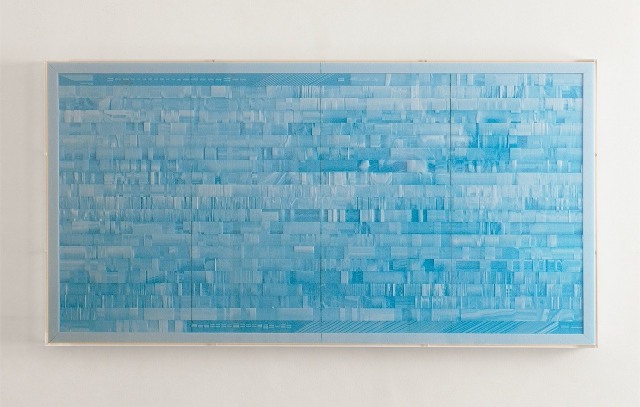Burford's practice covers a number of interlinked areas, with particular focus on information aggregation and the crystallization of the transient domain. He is fascinated by film, more specifically the process of watching images on a screen and the way our eyes read different colour and light.
As cinema becomes increasingly digital and dematerialised in its method of production, content and delivery, there is a consequent drive to return to its material roots in the physical world. Working with a variety of media - 3D printing, painting, video and time-lapse photography - Burford restructures traditional cinematic forms to create new synthetic compositions that describe four-dimensional Space-time.
Many of the works start with the tracing of cinematic time; using customized handmade cameras constructed by the artist. The artist uses these to trace long durational exposures of time through the production of temporal maps. Burford effectively crafts a cinematic score. The flowing bands of colour and abrupt changes in the photographic traces bear a direct indexical relation to the original cinematic material.
The images are the starting point for a series of artistic investigations into the material nature of cinematic memory - combining the use of physical film with modern digital manufacturing processes - a combination which echoes cinema's analogue past history and its present digital hybridity.
If cinema is thought of as the 'flattening' of real physical objects from the actual physical world, to be seen at a later stage (where the experience of time is technically structured and inherently generic) these artworks represent a gesture of returning; an attempt to introduce materiality, physicality and a natural temporality to cinema.
